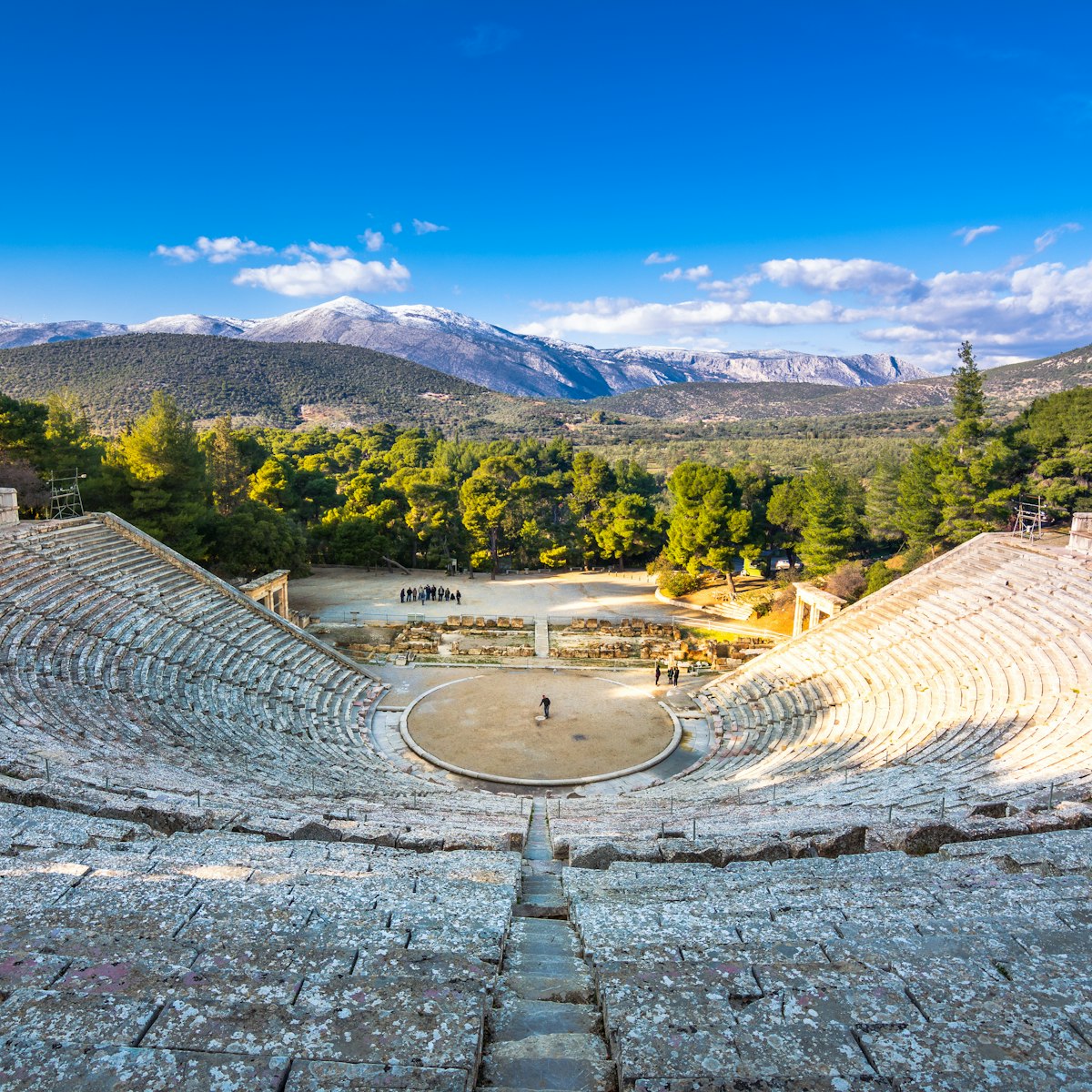In its day Epidavros, 30km east of Nafplio, was famed and revered across the Mediterranean as a place of miraculous healing. Visitors came great distances to the tranquil Sanctuary of Asclepius, the god of medicine, to seek a cure for their ailments. Today the World Heritage Site's amazingly well-preserved theatre remains a venue during the Athens & Epidavros Festival for Classical Greek plays, first performed here over 2300 years ago.
Legend has it that Asclepius was the son of Apollo and Coronis. While giving birth to Asclepius, Coronis was killed by the jealous Apollo, who discovered she had been unfaithful to him. Apollo took his son to Mt Pelion, where the physician centaur Chiron instructed the boy in the healing arts. Asclepius became a healer of such great renown that he brought a man back from the dead, which angered Hades, the god of the underworld, who asked Zeus to strike Asclepius down. Zeus did so, provoking, in turn, the wrath of Apollo, and Asclepius was eventually deified.
Apollo was worshipped at Epidavros in Mycenaean and Archaic times, but by the 4th century BC he had been superseded by his son. Epidavros became acknowledged as the birthplace of Asclepius. Although the afflicted worshipped Asclepius at sanctuaries throughout Greece, the two most important sites were at Epidavros and on the island of Kos. The fame of the Epidavros sanctuary spread, and when a plague raged in Rome, Livy and Ovid came to Epidavros to seek help.
It is believed that licks from snakes were one of the curative practices at the sanctuary. Asclepius is normally shown with a serpent, which – by renewing its skin – symbolises rejuvenation. Other treatments provided at the sanctuary involved diet instruction, herbal medicines and occasionally even surgery. The sanctuary also served as an entertainment venue and every four years, during the Festival of Asclepieia, Epidavros hosted dramas and athletic competitions.
There are buses from Nafplio to the theatre (€3.20, 45 minutes, four Monday to Friday, three Saturday, one Sunday) as well as direct Athens services. Off-season they only stop 1.5km away on the main road. A return taxi from Nafplio with waiting time is €70.







